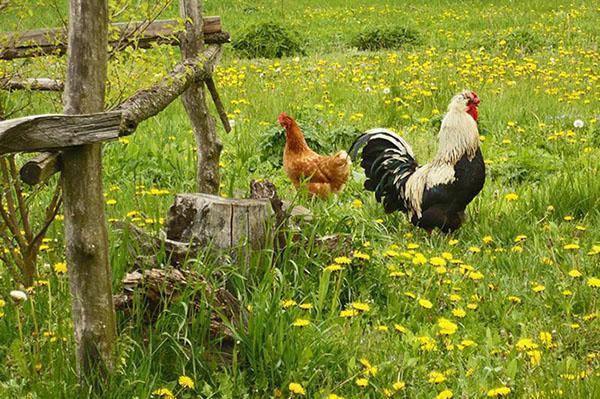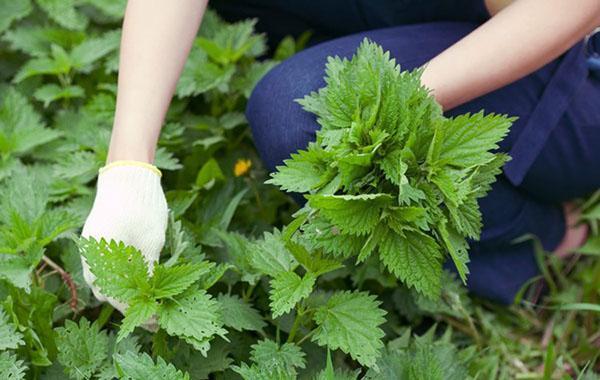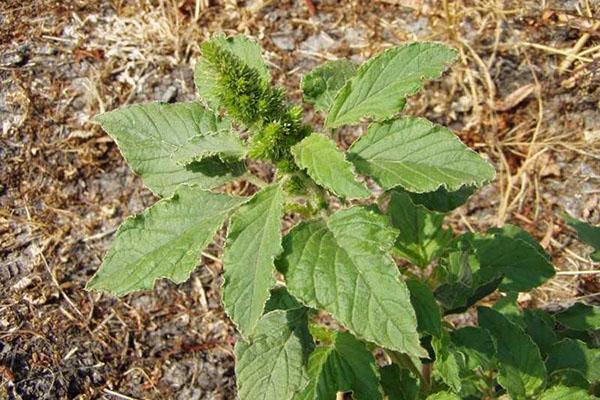June worries at the farm
 By the beginning of summer, chickens settle in the farmsteads, other poultry gives birth to offspring. June is the time when the kids are actively growing up and maturing, it is not the first spring okrol that is gaining weight. With the arrival of stable heat, all the inhabitants of the household yard have the opportunity to diversify their diet due to succulent herbs.
By the beginning of summer, chickens settle in the farmsteads, other poultry gives birth to offspring. June is the time when the kids are actively growing up and maturing, it is not the first spring okrol that is gaining weight. With the arrival of stable heat, all the inhabitants of the household yard have the opportunity to diversify their diet due to succulent herbs.
The owners of the farmstead begin to prepare them and work on solving other equally important tasks.
Harvesting green fodder in June

What plants will be useful in June? Goats, sheep, and cows that go to graze are well versed in grasses and rarely eat obviously dangerous plants. It is better for their owners to study in advance the cultures that their pets will be happy with.
 In May, healthy nettles, rich in organic acids, vitamins and, especially, carotene, only timidly made their way from under the fences, walls of homestead buildings and on the edges. In June, the plant gains strength, quickly grows and is suitable not only for fresh feeding, but also for drying for the winter.
In May, healthy nettles, rich in organic acids, vitamins and, especially, carotene, only timidly made their way from under the fences, walls of homestead buildings and on the edges. In June, the plant gains strength, quickly grows and is suitable not only for fresh feeding, but also for drying for the winter.
Widespread in Russia, the squid among gardeners is rightfully considered a malicious weed. But for livestock and poultry, this unsightly grass is a real treat.
Particularly useful for the bird are the seeds of the plant, rich in protein and fats, hidden in dense "fluffy" inflorescences-panicles. You can use this food:
- drying the tops of the shiritsa;
- steaming;
- mixing with a small amount of compound feed.
 As you can see, even the usual weeding of a summer cottage in June can make a significant contribution to the provision of fodder. Chickens, ducks, geese eat quinoa, clover, sweet clover growing at the gate, shepherd's bag and horse sorrel. The highlander bird goes for food, moan and the sow thistle that bothers the gardeners forever
As you can see, even the usual weeding of a summer cottage in June can make a significant contribution to the provision of fodder. Chickens, ducks, geese eat quinoa, clover, sweet clover growing at the gate, shepherd's bag and horse sorrel. The highlander bird goes for food, moan and the sow thistle that bothers the gardeners forever
When irrigated, many garden beds in June are covered with creeping shoots of juicy light green woodlice. This is a real delicacy for young turkeys and chickens.
 For a water bird that does not have access to a natural body of water, it is useful to harvest duckweed, which is stored for a long time in barrels filled with river water.
For a water bird that does not have access to a natural body of water, it is useful to harvest duckweed, which is stored for a long time in barrels filled with river water.
 Young tree foliage and tender shoots that have grown already this season are of great value in the diet of rabbits, goats, and sheep. Green brooms, harvested in June, replenish the diet of animals kept in the courtyard. Also, brooms are dried for the winter, when they become an excellent source of vitamins for young and adult animals.
Young tree foliage and tender shoots that have grown already this season are of great value in the diet of rabbits, goats, and sheep. Green brooms, harvested in June, replenish the diet of animals kept in the courtyard. Also, brooms are dried for the winter, when they become an excellent source of vitamins for young and adult animals.
June is the time of mass flowering of wild-growing cereals. By this time, plants, as well as numerous types of legumes and other grasses, accumulate the maximum amount of nutrients and are ready for mowing.
If you delay, the herbs will coarsen, lose their taste and nutritional qualities, this will come out of them less valuable and nutritious.
 During drying, it is important that the grass retains its original color, does not crumble and remains the same aromatic.
During drying, it is important that the grass retains its original color, does not crumble and remains the same aromatic.
Features of keeping livestock and poultry in June
 For goats and domestic sheep in June, they organize pasture maintenance. While the animals are grazing, the sheepfolds and goat houses can be put in order. Clean the premises, dry and disinfect them well.
For goats and domestic sheep in June, they organize pasture maintenance. While the animals are grazing, the sheepfolds and goat houses can be put in order. Clean the premises, dry and disinfect them well.
When collecting grass for feeding animals, obviously dangerous plants are removed from armfuls, which include:
- wormwood, faded mustard, tansy, which gives goat milk a pronounced bitter taste;
- horsetail that reduces milk production;
- branches of wild rosemary, poisonous for domestic goats;
- daffodil and tobacco plants that have fallen from the beds or flower beds.
Sheep, both adults and reared lambs, at the beginning of summer completely move to pasture, but if the plot does not meet the need for feed, the animals are fed, provided with water, salt and shade to rest on hot days.
 Rabbits willingly eat:
Rabbits willingly eat:
- dandelion;
- plantain rich in mineral salts;
- yarrow, which improves the digestion of animals and positively affects the lactation of rabbits;
- knotweed;
- annoying gardeners, rapidly multiplying by rhizomes of wheatgrass.
Animals willingly eat legumes, corn, which gives a huge amount of juicy green mass in June. From country beds, rabbits can be fed lettuce and early cabbage, spicy herbs, carrot tops.
Bunnies grow quickly on green forage, which turn out to be much stronger than their spring counterparts.
 The poultry house in June is also noisy due to the abundance of young animals. For him, the owners planted beds of early ripe lettuce, and from a week old they introduce small portions of duckweed into the diet, which is given in combination with semolina, and then with chopped grass and mixed feed.
The poultry house in June is also noisy due to the abundance of young animals. For him, the owners planted beds of early ripe lettuce, and from a week old they introduce small portions of duckweed into the diet, which is given in combination with semolina, and then with chopped grass and mixed feed.
If there is a reservoir on the site, you can stock it yourself in June. For this, fish fry and plankton, species common in a particular area, are used. And to push the development of microflora will help the introduction of a gram of nitroammophoska for each meter of area. Such "feeding" of the reservoir is carried out up to twice a month.
I love all these June worries very much. I'm looking forward to it. Thanks for the article. She underlined many interesting things.